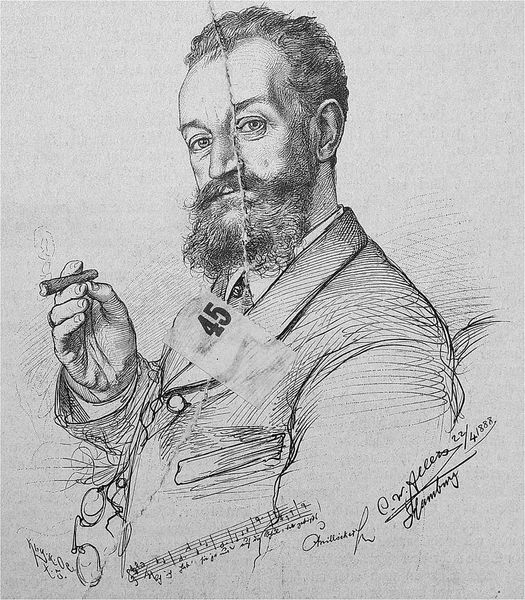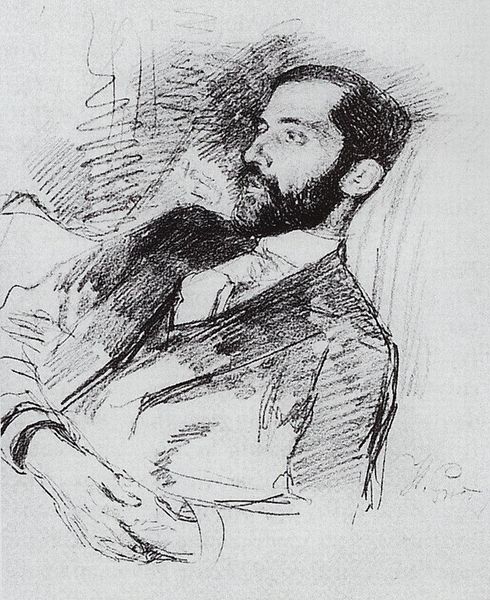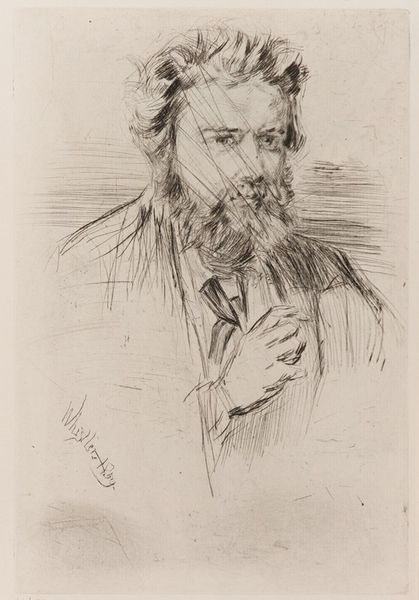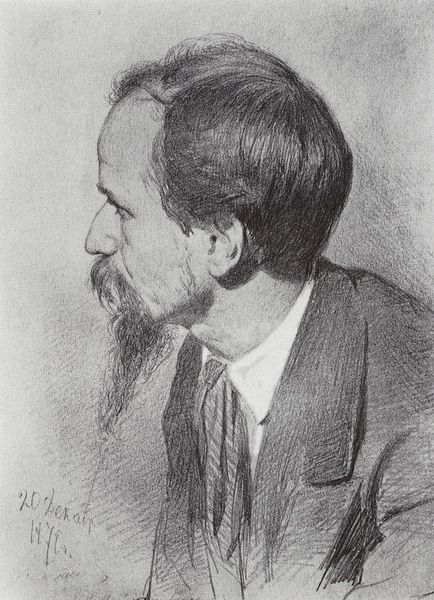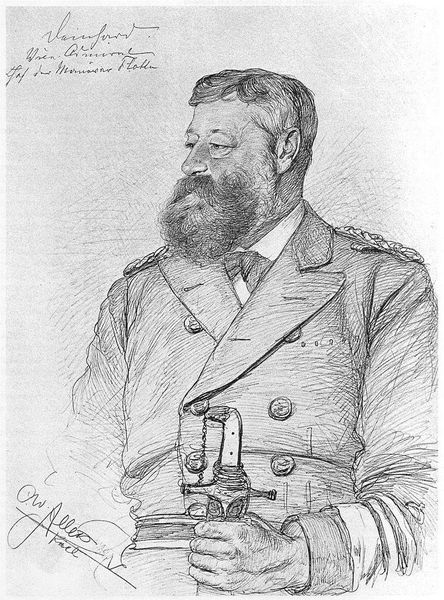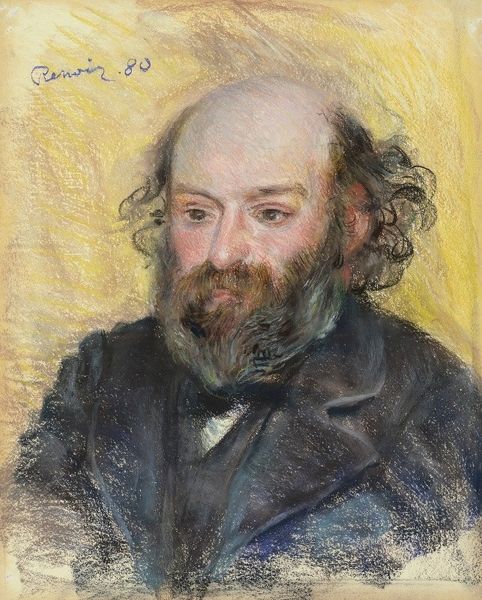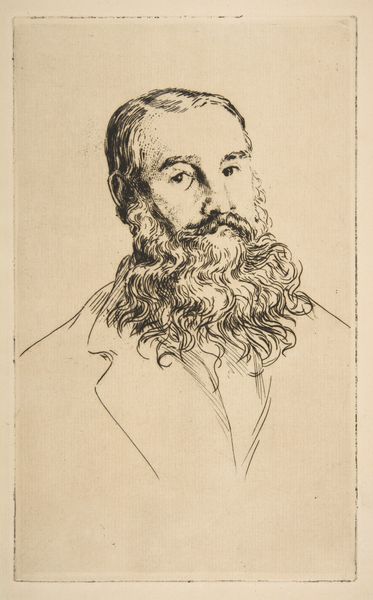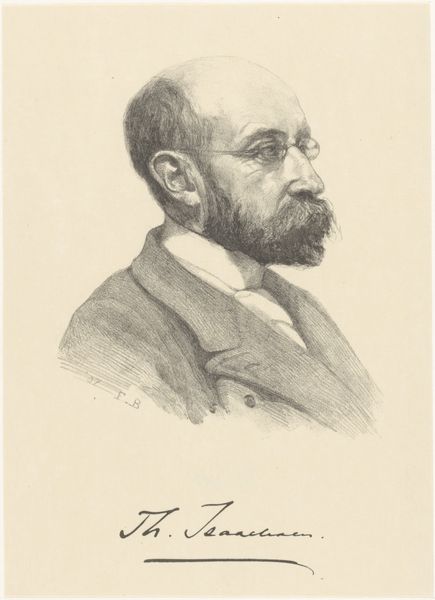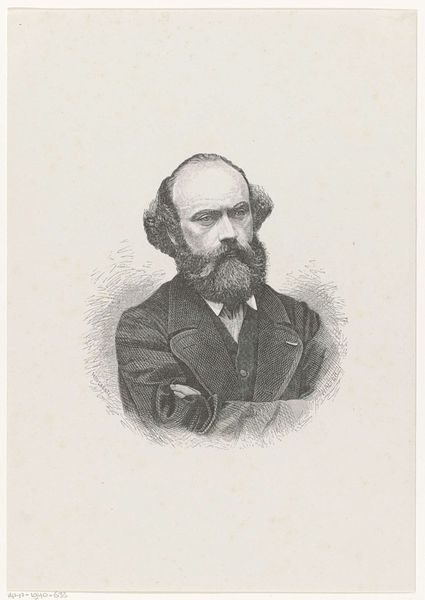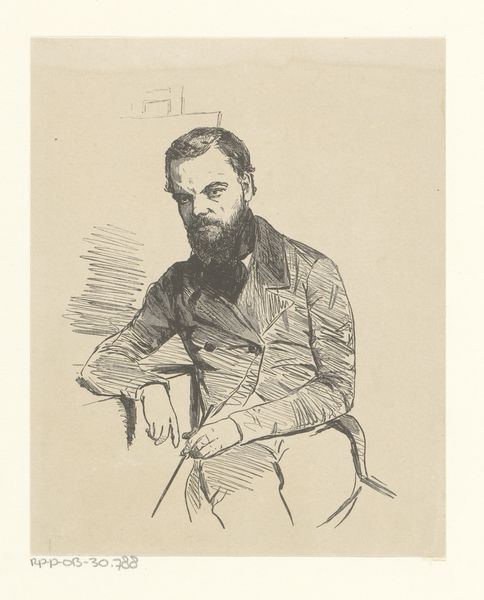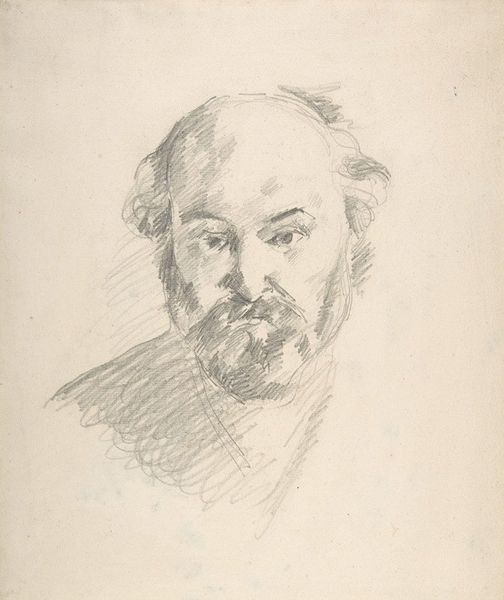
#
facial expression drawing
#
portrait image
#
male portrait
#
portrait reference
#
sketch
#
animal drawing portrait
#
portrait drawing
#
facial study
#
facial portrait
#
portrait art
#
digital portrait
Copyright: Public domain
Christian Wilhelm Allers made this drawing of Ernst Schweninger in 1892, using graphite on paper. Though simple in its materials, the drawing speaks volumes about the social position of both artist and sitter. Allers was a well-regarded artist in his day, working primarily in drawing and printmaking. Here, Allers deftly uses the graphite to capture the likeness of Ernst Schweninger, a physician known for his unconventional methods. The choice of graphite lends a sense of immediacy to the image, as if capturing a fleeting moment. The materiality of graphite also lends itself to capturing intricate details and textures of Schweninger’s hair and clothing. The act of drawing itself is deeply intertwined with notions of labor and skill. Allers's expertise is evident in the way he coaxes life-like qualities from simple materials. He spent time and effort to create this piece, and drawing was a skilled profession. So, in appreciating this portrait, we can consider not only the sitter's status, but also the social and economic context of artistic labor in late 19th century Germany.
Comments
No comments
Be the first to comment and join the conversation on the ultimate creative platform.
